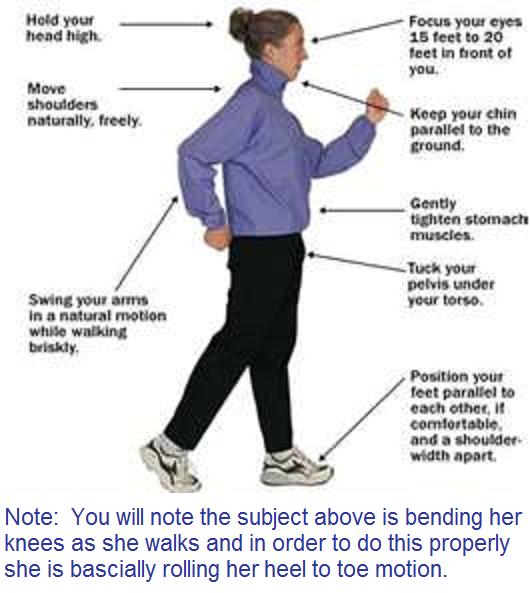 If
you ask anyone whether they know how to walk they would say they are not even
conscious of the fact.
If
you ask anyone whether they know how to walk they would say they are not even
conscious of the fact.
Walking Properly
 If
you ask anyone whether they know how to walk they would say they are not even
conscious of the fact.
If
you ask anyone whether they know how to walk they would say they are not even
conscious of the fact.
Incredibly most people do not walk properly and especially if they are dealing with an infirmity that has negatively affected their ability to walk properly.
I personally am coming off a very serious injury where I fell in the kitchen and twisted my leg and knee along with the hip. I have been dealing with this the past 4 years and I am still not out of the woods.
Incidentally knee and hip replacement therapy demands proper walking soon after the procedures. Unfortunately in time you get in the habit of limping etc. when you really have no reason to do so.
I have been to numerous medical sources from Chiropractors, Doctors, Surgeons, Therapists, Nerve specialists and more and to this day no one has been able to nail down what my problem really is other than the many implications I have past and present, but not necessarily solutions. The human body is not like a first class auto mechanic shop that locks into the vehicles computer and arrives at an accurate diagnosis. Perhaps some day we will have that luxury for our health problems. For now we have to deal with "contributing factors" and hope that we can find what factors are causing the problem.
In my particular case with the many implications the medical people had to sort through the accident implications, a knee issue I have had for years and a sciatica problem. In this case you don't know how to treat a patient on a priority basis. My personal opinion is when you have accident implications is to focus on healing this before there are assumptions drawn on the other issues going on. If you don't correct an injury problem you are not going to correct other issues and nerve damage is one of them. I have had nerve specialists try to treat my nerve problem and totally disregard what my core problem was and that is the tight muscles and imbalance. Do you think that you can solve a muscle imbalance by spinning a patient around in a chair and putting water down their ear canal? I don't think so. It might tell the Doctor what the problem is, but what do you do to correct it?
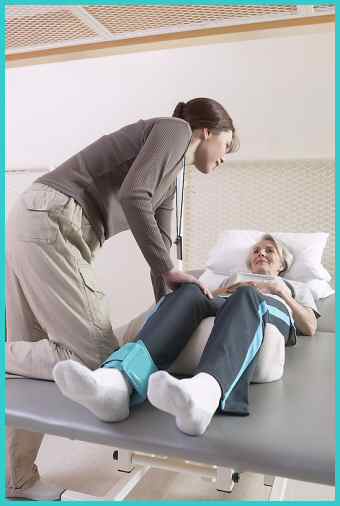 I did have one incident when I finished physical therapy
and on my last day as I past one of the fine physical therapists that treated me
when she said.......
I did have one incident when I finished physical therapy
and on my last day as I past one of the fine physical therapists that treated me
when she said.......
" Bob, if you want to get better you will have to learn how to walk". I was stunned by the comment and it really turned a light bulb on for me.
Now I have been told by most that I had to correct my walking and it wouldn't be fair for me to say they haven't. Unfortunately the sources including the therapist that told me I had to learn how to walk did not tell me how to walk, they just said "Your limping, your waddling, your stiff legged, one did mention that I wasn't pushing off with the right resources that you need in proper walking. Take another look at the gal on top of this feature, regarding the proper way to walk.
There are many medical issues where the so called expert does not have a clue as to passing on to a patient the right verbalization and demonstrative session to construct a comprehensive program in " Teaching someone how to walk properly". For the most part as in computer tutors they are impatient. Again as incredible as it may sound I went to 7 different specialists and not one of them told me how to walk properly and I had to find the demonstration on the Internet that is on the top of this feature.
 The
explanation below applies to someone who has an infirmity that could have been
caused by an accident. Of course old age and bad habits also enter the
equation. I was told before my accident that I was already stooping over and
limping. It went in one ear and out the other. This comes with old age when you are nursing sore muscles/aches
and pains. In my case it also came from a 35 year sports activity that
concentrated stresses on some parts of my body and neglected opposing areas.
In my case handball is a lateral sport that can increase the tension and
actually shorten and tighten the outsides of the leg tendons etc. and in the process neglect the
insides, hence an imbalance.
The
explanation below applies to someone who has an infirmity that could have been
caused by an accident. Of course old age and bad habits also enter the
equation. I was told before my accident that I was already stooping over and
limping. It went in one ear and out the other. This comes with old age when you are nursing sore muscles/aches
and pains. In my case it also came from a 35 year sports activity that
concentrated stresses on some parts of my body and neglected opposing areas.
In my case handball is a lateral sport that can increase the tension and
actually shorten and tighten the outsides of the leg tendons etc. and in the process neglect the
insides, hence an imbalance.
I did not realize that by wiping myself out most days with a very aggressive sport that it prevented me from diversifying my activities and trying to maintain a muscular balance. My muscles were simply out of whack. When you enter the links at the end of this feature you will see where walking produces this balance if you walk properly.
 Walking properly
along with the demo at the top of this feature is where your feet are parallel to
one another and not at an angle to one another as in a duck walk to any degree.
The feet as they move should be straight forward and we believe with a generous
amount of this therapy the stress and the strain will eventually dissipate. You may
be fortunate to not have stress and strain on your legs, but starting now
maintaining
your balance will prevent many problems that arise later and believe me these
problems are not easily resolved. The only way you can establish this
balance is with a diversified exercise program working all areas and especially
countering areas that are weighted heavier from sports activities and/or
lifestyle practices.
Walking properly
along with the demo at the top of this feature is where your feet are parallel to
one another and not at an angle to one another as in a duck walk to any degree.
The feet as they move should be straight forward and we believe with a generous
amount of this therapy the stress and the strain will eventually dissipate. You may
be fortunate to not have stress and strain on your legs, but starting now
maintaining
your balance will prevent many problems that arise later and believe me these
problems are not easily resolved. The only way you can establish this
balance is with a diversified exercise program working all areas and especially
countering areas that are weighted heavier from sports activities and/or
lifestyle practices.
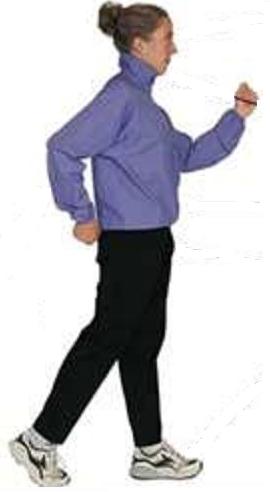 Take
notice of the gal in the walking demonstration on the left. Notice how
she is thrusting out her arm at a right angle and of course alternating this
with the other arm in a cadence fashion. Many walkers neglect this and
this is a mistake. When you thrust your arms out in cadence from one
side to the other you are exercising the lats that are a complex part of
your back and tied into many components of your structure including your
hips and all the connections right down to your toes. By doing this
exercise you will greatly enhance your balance, your posture along with
benefiting the muscles etc. in this complex. Walking doing this
procedure is an absolute must. Once you discipline your self in doing
this you will immediately realize the balance you are receiving let alone
all the other benefits.
Take
notice of the gal in the walking demonstration on the left. Notice how
she is thrusting out her arm at a right angle and of course alternating this
with the other arm in a cadence fashion. Many walkers neglect this and
this is a mistake. When you thrust your arms out in cadence from one
side to the other you are exercising the lats that are a complex part of
your back and tied into many components of your structure including your
hips and all the connections right down to your toes. By doing this
exercise you will greatly enhance your balance, your posture along with
benefiting the muscles etc. in this complex. Walking doing this
procedure is an absolute must. Once you discipline your self in doing
this you will immediately realize the balance you are receiving let alone
all the other benefits.
You can also see the subject starting to bend her right knee back and at the same time applying pressure to her left foot that is about ready to apply tension and do the lifting needed to effectively work all of the parts to their optimum. It doesn't show it in the above demo on the left but we can assume that the subject has conformed to the practice of bending her leg when she went forward and at the end of the lift straightened up her leg on the final stroke before bringing forth the other leg in the sequence.
This is opposed to what they refer to as hyper extension where you exercise a stiff leg from the start to the finish. You must bend your knee in the initial thrust, apply pressure to the area and lift your body similar to going up a stair way and we have addressed the stairway simulation in our knee replacement feature.
Using stairs by bending and lifting the knee will be more difficult depending on the stage of the replacement or injury you are at. Walking and lifting is much easier than doing a stair lift with the involved leg. In our knee replacement feature we stress the need to have an area that you can grab on to and pull on when you are starting a stair lift. When starting a stair lift just a rocking motion with the uninvolved leg firmly planted on the ground level may be all that can be accomplished for awhile. In time the goal is to place the involved leg on the stair, and lift the uninvolved leg up using the involved legs tension with a bend and thrust to the stair level. Once you reach this goal than the next step is to continue up a flight of stairs even if you have to use a pull assist as in a banister application.
You just can't do anything better than to walk properly especially when you get older. If you engage in another activity that wipes you out and inhibits your desire to walk, this is a big mistake and the start of big problems for you including lopping off many quality years off of your life.
We have a feature on stair stepping and our layer method of constructing a series of graduations for a rehab of either a knee replacement case or for that matter an injury that would require the use of stair therapy to heal areas that have either been breached with surgery or damaged with injury. Of course professional diagnosis would be extremely helpful if you can find a knowledgeable contact. The link to our knee replacement feature that has an extensive segment on stair therapy is........ http://www.blueeyedcurse.com/Kneereplace.htm just scroll down to it and look for Step
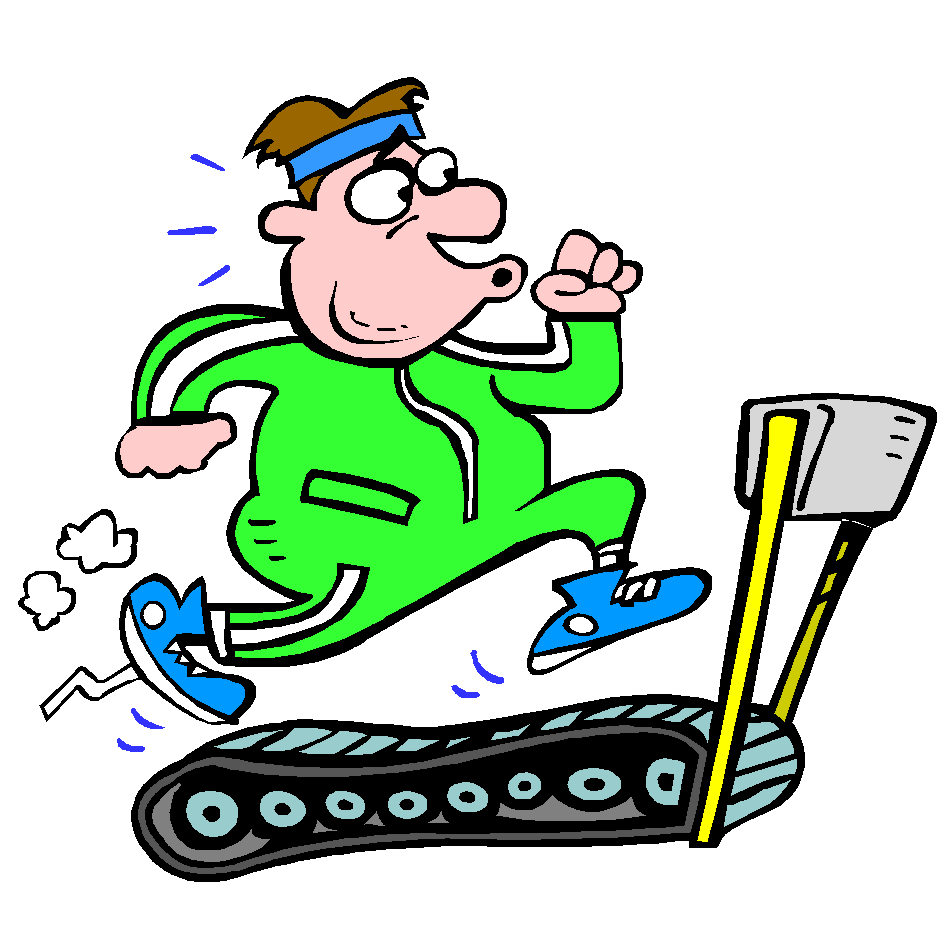 When
you walk even in the house get in the habit of a little heel to toe motion.
A therapist showed us a shoulder rocking motion as you walk similar to our
illustrations and this worked
great as it translated into a very nice erect walk, something my we have not
practiced for many years.
When
you walk even in the house get in the habit of a little heel to toe motion.
A therapist showed us a shoulder rocking motion as you walk similar to our
illustrations and this worked
great as it translated into a very nice erect walk, something my we have not
practiced for many years.
A treadmill can also create the counter balance we referred to in the first part of this feature as well, for those who are suffering from muscle imbalance from repetitive activities and the complications from it. One important practice you can bring into the mix is bending your knees back while walking on the treadmill. When knees start to give you problems the first thing that happens is you start to favor them, by dragging your legs instead of bending your knees. When you start to drag your legs you may temporarily alleviate the pain, but in a short time things will start to go down hill and pain and stiffness will escalate.
We have read that a leg imbalance creates a tearing of the weak opposing side tissue of the legs as in shin splints, where the attachments to the bone are compromised. This tearing is wicked, take it from me.
In addition, the demonstration on the right,
depending on your condition that should be evaluated by a Professional the
treadmill is one of the most important practices that you can bring into the entire program. A
combination of the treadmill starting with 300 steps a day to a 1000 broken up
into two sessions of 500 each a day and then taking this dynamics to the streets
into a walking regimen. Yes
you must walk straight with your feet parallel to one another and do the same on
the treadmill. Do the same thing when you are walking to the John or in
the
supermarket, everywhere you walk, including your sleep.
important practices that you can bring into the entire program. A
combination of the treadmill starting with 300 steps a day to a 1000 broken up
into two sessions of 500 each a day and then taking this dynamics to the streets
into a walking regimen. Yes
you must walk straight with your feet parallel to one another and do the same on
the treadmill. Do the same thing when you are walking to the John or in
the
supermarket, everywhere you walk, including your sleep.
 Don't pay through the nose for a treadmill if you don't
have one. Look through the ads and local internet. You should pick
one up for a song (Like 50 bucks) and already set up versus these nuts and bolts you get in
a box
that tears your hair out assembling it.
Don't pay through the nose for a treadmill if you don't
have one. Look through the ads and local internet. You should pick
one up for a song (Like 50 bucks) and already set up versus these nuts and bolts you get in
a box
that tears your hair out assembling it.
Below is an important link on walking regarding muscle.
I recently ran across this information and other issues in particular the lower extremities
and it has been a very interesting study.
I have come to a conclusion and it revolves around muscle imbalance.
There could be other factors contributing to a lower extremity problem but if I would be asked to pick a dominant factor, muscle imbalance would lead the list.
I had one experience with a therapist in our primary physicians facility that told me straight out on my initial visit that she noticed the outside of my calves were very hard and muscular.
The question is how does one acquire muscle imbalance? I have never had a therapist for my muscle imbalance other then the short episode with
the therapist in my primary physicians office that I didn't it take very seriously. I am sure there are good therapists that can maintain and perhaps correct improper muscle balance in their students exercise regimen by the type of exercises they advocate and the machines they recommend.
Before I got hooked into one therapist I would interview some and see if they appear to know what they will be putting you through.
Again I believe there are therapists that could put you through a regimen that could be counter productive as there are so called professional therapists that don't know what the hell they are doing.
There are people like me that have carried out a daily regimen that are counter productive in keeping a proper balance over the years.
I played paddle ball for 35 years that is very laterally intensive and I believe the dynamics of this lateral movement applied undue effects on
the outside of my calves and perhaps my Adductor and Abductor areas.
In fact it is quite possible that the same dynamics in my calf areas increased the muscle buildup in the outside of the calves and in the process compromised the state of the inside of my calves that by the way can contribute to "shin
splints. I believe think there is a relationship to the symptoms of spinal stenosis settling in areas of the calves and muscle buildup in these areas.
I do believe a combination of the right therapy and a diligent walking regimen can be just what the Doctor ordered.
A good moist heating pad like the Thermophore for about 50 bucks is the ticket.
I would suggest about 5 heat sessions a day (about 20 minutes) with about 2 hour
intervals without heat. There are ways to bring in a modest amount of
icing like 5 minutes just before a heat session for what they refer to as
contrast bathing. In this case between the ice sessions and followed by
the heat you could experience a contraction with a dilation effect. Try
it, if it doesn't help stick to just the heat.
Protein
 I
had noticed in the last few years when viewing myself in the mirror that I was
showing a definite wrinkling of flesh under my arms and in particular the muscle
area. I recall my Dad in his last years had a definite "Loss of muscle"
and you could see it in this arm area. I remember as kids that we used to
"make a muscle" in this area. Of course when you have a loss of muscle in
the area it certainly reflects a tendency of muscle loss in other areas of the
body and the legs in particular depend a great deal on muscle to perform the
various tasks involved with the legs, just raising them for one example.
The most significant role of muscle in the legs is supporting the skeletal
areas, as in the knee. You lose the muscle supporting your knees it
is only a matter of time when you will lose the integrity of the knee itself.
I
had noticed in the last few years when viewing myself in the mirror that I was
showing a definite wrinkling of flesh under my arms and in particular the muscle
area. I recall my Dad in his last years had a definite "Loss of muscle"
and you could see it in this arm area. I remember as kids that we used to
"make a muscle" in this area. Of course when you have a loss of muscle in
the area it certainly reflects a tendency of muscle loss in other areas of the
body and the legs in particular depend a great deal on muscle to perform the
various tasks involved with the legs, just raising them for one example.
The most significant role of muscle in the legs is supporting the skeletal
areas, as in the knee. You lose the muscle supporting your knees it
is only a matter of time when you will lose the integrity of the knee itself.
I was told by one the medical contacts I made that it was important for me to address my protein intake and suggested that I indulge in whey protein during my daily intake. I have been using a milk whey product and in fact mix it with orange juice along with some pumpkin seeds to complete my goal at every meal and snack of a balance of Protein, Carbs and good Fat.
We also add whey protein to our daily smoothie and engage in a generous amount of good meat every day with a minimum of fat. I think it is mistake to cut out meat from ones diet. The only precaution we take with our meat intake and that includes a piece of beef first thing in the morning is to add a piece of spinach as well as raw green vegetable to a meal with meat. Green vegetables counter the down side of the iron in meat for one example. Raw green vegetables are the "great equalizer".
 Incidentally
when you start a walking regimen don't be surprised if increased discomfort
levels appear as in the hips and below the knees in the soft tissue areas like
the tissue attached to the tibia and calves, because of the new pressures you are applying to the
various body areas. Keep at it because that will tell you that you need to
correct these imbalances with again
straight forward walking, feet parallel
to one another and it could take a generous amount of exercise and
walking to do it. It took many years to have these parts thrown out of
whack, it most likely will take years to get them back in shape. Don't
give up. Your whole life, your being will depend on how diligent you
are with this.
Incidentally
when you start a walking regimen don't be surprised if increased discomfort
levels appear as in the hips and below the knees in the soft tissue areas like
the tissue attached to the tibia and calves, because of the new pressures you are applying to the
various body areas. Keep at it because that will tell you that you need to
correct these imbalances with again
straight forward walking, feet parallel
to one another and it could take a generous amount of exercise and
walking to do it. It took many years to have these parts thrown out of
whack, it most likely will take years to get them back in shape. Don't
give up. Your whole life, your being will depend on how diligent you
are with this.
Keep in mind when you have an imbalance it throws many other faculties out of balance as well. Neurological imbalances for one that in turn can negatively impact your nerve system by closing off vital passage ways of electrical and other circulatory activity vital for body function. It may be difficult to believe that building up tight muscles by repetitive activity and not countering this problem with opposing activities can be the start of your early demise. I believe that it is impossible neurologically to correct a muscle tightness and imbalance by not aggressively approaching the muscle imbalance first, versus a nerve treatment path. I would like to know how many nerve specialists would agree with this theory.
I hope by now that you can appreciate how important it is to walk properly and whether you are 21 or 71 it is not too late to start.
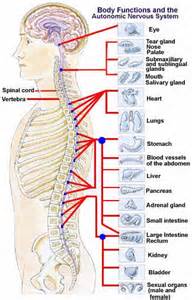
I saved the image on the left for last because of its critical significance regarding the spine and for those who have not been exposed to the spine, the main trunk connected to the brain that control every organ in the body. If you look close to the connection between the tributaries that exit out of the spinal canal between the vertebras you can get a sense of how important the health of the spine and vertebras are to your overall health. When you take in consideration how critical the health of the vertebras are in relation to the comfortable path of the nerves originating in the brain and continuing to govern the proper functioning of all of the organs in the body, you can readily see how a healthy spine is so critical to the process.
http://www.livestrong.com/article/108404-muscles-walking-exercise/
http://www.livestrong.com/article/472049-how-to-strengthen-the-walking-balance-muscles/
http://www.balancewalking.com/anyone-can-do-it/the-benefits/
.